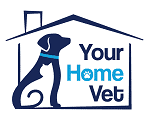Classification Kingdom: Animalia Phylum: Chordata Class: Mammalia Order: Insectivora Family: Erinaceidae Subfamily: Erinaceinae Genus: Atelerix Species: Atelerix albiventris
African Pygmy Hedgehogs are an insectivore that will grow to about 6 to 9 inches in length and will weigh about one pound when fully grown. The average life span is five to seven years. They are nocturnal, so they will sleep during the day, and will be up at night. This is not to say they won’t be up at all during the day. If your up and around, your Hedgehog may take on your schedule. They do require the contrast of light and dark, so you don’t want to shield them away from light. They will be sensitive to bright light.
Hedgehogs have quills that cover their bodies. They use the feathers to protect themselves whenever they feel they are in harm’s way. When threatened, they will stiffen their quills and roll into a ball. Once they calm down, they will relax and unroll. They don’t shoot their quills, nor are they barbed. They can lose a few feathers now and then. Hedgehogs are non-allergenic and are odorless. Although Hedgehogs are available in many colors, gray is what is most convenient.
The best age to acquire a pet hedgehog is shortly after they have been weaned after about 6-8 weeks of age. Hedgehogs are entirely independent by this stage and adapt to new owners much more readily when young. If the pet store or breeder handles the Hedgehog’s, then even an older one will adjust nicely.
A 20L gallon aquarium is a suitable housing unit for Hedgehogs. A 10 gallon is excellent as a baby, but they will need more room when full size. Aquariums are preferred over a cage unit. This keeps the Hedgehogs from getting drafts and colds. Natural litters, such as Carefresh, or Yesterday’s News is the preferred litter. Do not use cedar chips. The cage should be cleaned daily, by scooping out the droppings and dirty bedding and adding new litter. A complete change of litter should be done three times a week. Hedgehogs are easily litter box trained, by placing a litter box in the corned of the housing unit, with a dust-free litter or pine chips. Place some of their droppings in the litter box, so that they get the idea.
Earlier it was mentioned that Hedgehogs are insectivores. 8in1 Hedgehog Food, along with a good quality high protein cat food, such as Nutro Max Cat Food, is a well-balanced diet for Hedgehogs. An occasional mealworm and cricket are also beautiful. A good brand of canned dog food as a treat is also suitable for them. Its recommended getting Hedgehogs used to a water bottle. It’s much more sanitary than a water dish.
To handle the Hedgehog, gently scoop them from behind and under. You must let the Hedgehog know you are there. Don’t startle them. The Hedgehog should unroll in about 30 seconds and start to explore. Do not try to pet the baby Hedgehog on its head, until they get to know you. Once they get to know you, they will allow their head petted without extending their quills and rolling in a ball. Their natural defense is not to bite, but to spread their feathers, and run in a ball. Hedgehogs will usually lick two times before eating.
Each Hedgehog has its unique temperament. The breeder should have socialized the babies. If you feel your Hedgehog is becoming aggressive or antisocial, then you need to review the frequency and nature of their handling that they are receiving. You will need to increase the amount of time you are handling them.





Meet Ruby! She is a little girl rat who was submitted by her loving mother Corrina from Arizona. She found out from her friend that their rat had babies, then later found out that they were going to be used as snake food. So she went to her friends house and picked out the sweetest and most adorable rat and named her Ruby. She loves giving kisses and getting attention from mommy but is a bit shy to strangers. She loves running around the bedroom and hiding in different places. Isn’t she soooo adorable everyone? Thank you so much for your submission. Best of luck!